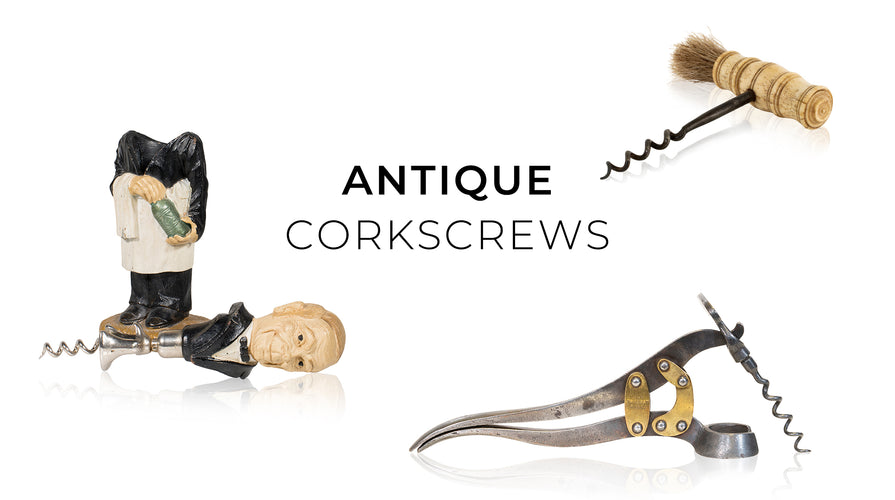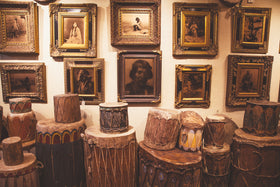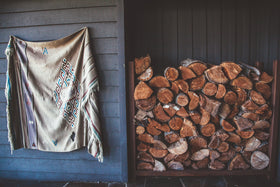Uncorking Nostalgia: The Allure of Vintage and Antique Corkscrews

In the world of wine enthusiasts and collectors, few objects evoke a sense of nostalgia and charm like vintage and antique corkscrews. These humble yet essential tools have a fascinating history and have become prized items in the world of collectibles.
A Brief History of Corkscrews:
The history of corkscrews dates back centuries, and they have played a vital role in the enjoyment of wine for generations. The earliest known corkscrew design can be traced back to the 17th century, but it wasn't until the 19th century that they became more widespread as cork closures gained popularity. Early corkscrews were simple and utilitarian, often made of iron or wood, featuring a simple helix or "worm" that could be twisted into the cork to extract it from the bottle.
Why Corkscrews are Used:
Corkscrews are essential tools for opening wine bottles sealed with natural cork closures. As glass wine bottles with cork stoppers gained prominence in the 18th and 19th centuries, corkscrews became a necessary accessory for anyone who wanted to savor their favorite wines.
Types of Corkscrews:
Over the years, corkscrews have evolved, leading to a wide variety of designs. Some popular types of corkscrews include:
- Waiter's Friend or Sommelier Knife: A versatile folding corkscrew with a small blade for cutting the foil seal on the bottle neck.
- T-handle Corkscrew: A corkscrew with a T-shaped handle for an improved grip during extraction.
- Winged Corkscrew: Recognizable by its two lever arms that rise as the worm is twisted into the cork.
- Ah-So or Two-Prong Cork Puller: A delicate tool used to remove older, fragile corks without damaging them.
- Screwpull Lever Corkscrew: A modern design with a lever mechanism that effortlessly removes corks with a simple up-and-down motion.
What's with the brush?
The brushes on T-handle corkscrews help remove any dirt or debris that might accumulate on the bottle's neck, ensuring a clean and pristine surface before opening the wine. This is especially valuable for older wines that may have accumulated sediment over time.
The Attraction of Vintage and Antique Corkscrews:
Collecting vintage and antique corkscrews has grown in popularity over the years, captivating the hearts of wine enthusiasts and collectors alike. Antique corkscrew collectors are a passionate group with a keen eye for detail and a thirst for uncovering hidden gems. As they scour antique shops, auctions, and online platforms, they seek out corkscrews that possess certain characteristics, historical significance, and aesthetic appeal. Here are some key aspects that collectors look for in antique corkscrews:
- Rarity: Collectors are often on the hunt for corkscrews that are rare or have limited production. Uncommon designs, unique mechanisms, or corkscrews from specific historical periods can make a piece particularly desirable.
- Age and Historical Significance: The age of an antique corkscrew is a crucial factor in its appeal. Collectors seek pieces that date back to the 18th, 19th, or early 20th century, representing different periods of corkscrew evolution and usage. Corkscrews associated with significant historical events or made by renowned manufacturers may hold extra value.
- Materials and Craftsmanship: The materials used and the craftsmanship involved in creating the corkscrew are essential considerations. Intricate detailing, hand-carved handles, and high-quality materials like ivory, bone, or rare woods can significantly enhance a corkscrew's value and aesthetic appeal.
- Condition: Collectors prefer corkscrews in good condition, free from significant damage or repairs. Pristine or well-preserved pieces fetch higher prices and are highly sought after.
- Functionality: While collectors value aesthetics and history, they also appreciate functional corkscrews. A working mechanism is often a plus, as it demonstrates the corkscrew's original purpose and usability.
- Unusual Mechanisms or Designs: Novelty corkscrews with unique mechanisms or designs that were experimental or innovative for their time tend to captivate collectors. These unconventional pieces are valued for their ingenuity and representation of the era's creativity.
- Maker's Mark or Signature: Corkscrews made by well-known manufacturers or bearing a maker's mark or signature often command greater attention from collectors. Such markings can authenticate the piece and provide insight into its origin.
- Provenance and History: Collectors cherish corkscrews with a documented history or a known previous owner, especially if it has a connection to a famous personality or historical event.
- Aesthetics and Design: The overall beauty and design of the corkscrew play a significant role in its allure. Artistic handles, elegant shapes, and harmonious proportions make a corkscrew stand out as a collector's piece.
- Completeness and Originality: Collectors seek corkscrews in their original state, complete with all parts and components. Alterations or replacement of parts can diminish the value and authenticity of the piece.
In Conclusion:
Vintage and antique corkscrews are not just tools for opening wine bottles; they are pieces of history, embodying the traditions and craftsmanship of yesteryears. The thrill of discovering a rare and exquisite corkscrew, whether with a charming stag handle or an intriguing advertising emblem, ignites the passion for collecting and preserving these timeless treasures. So, the next time you uncork a bottle of wine, take a moment to appreciate the corkscrew that accompanies it – a humble yet significant part of the wine experience with a story to tell.
View Cisco's collection of vintage & antique corkscrews here.




